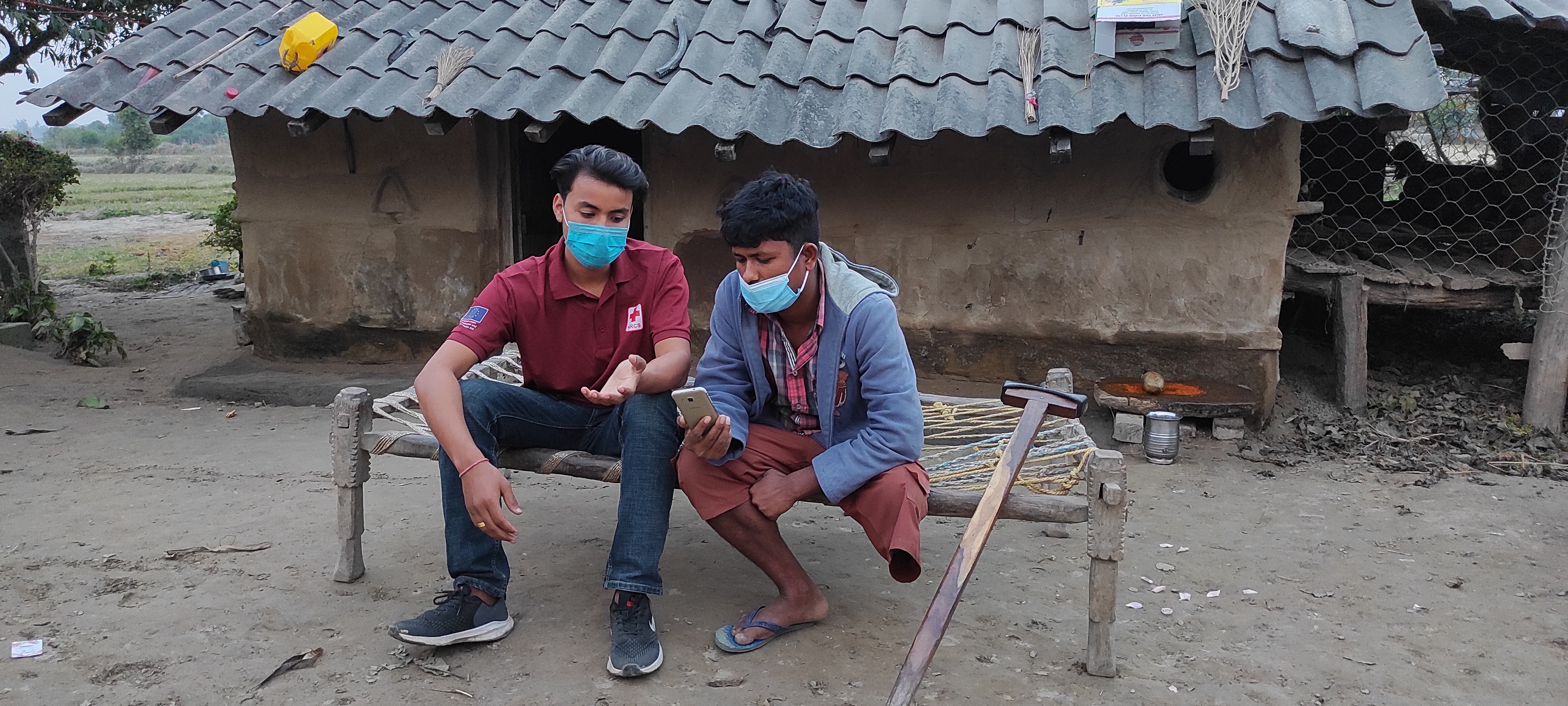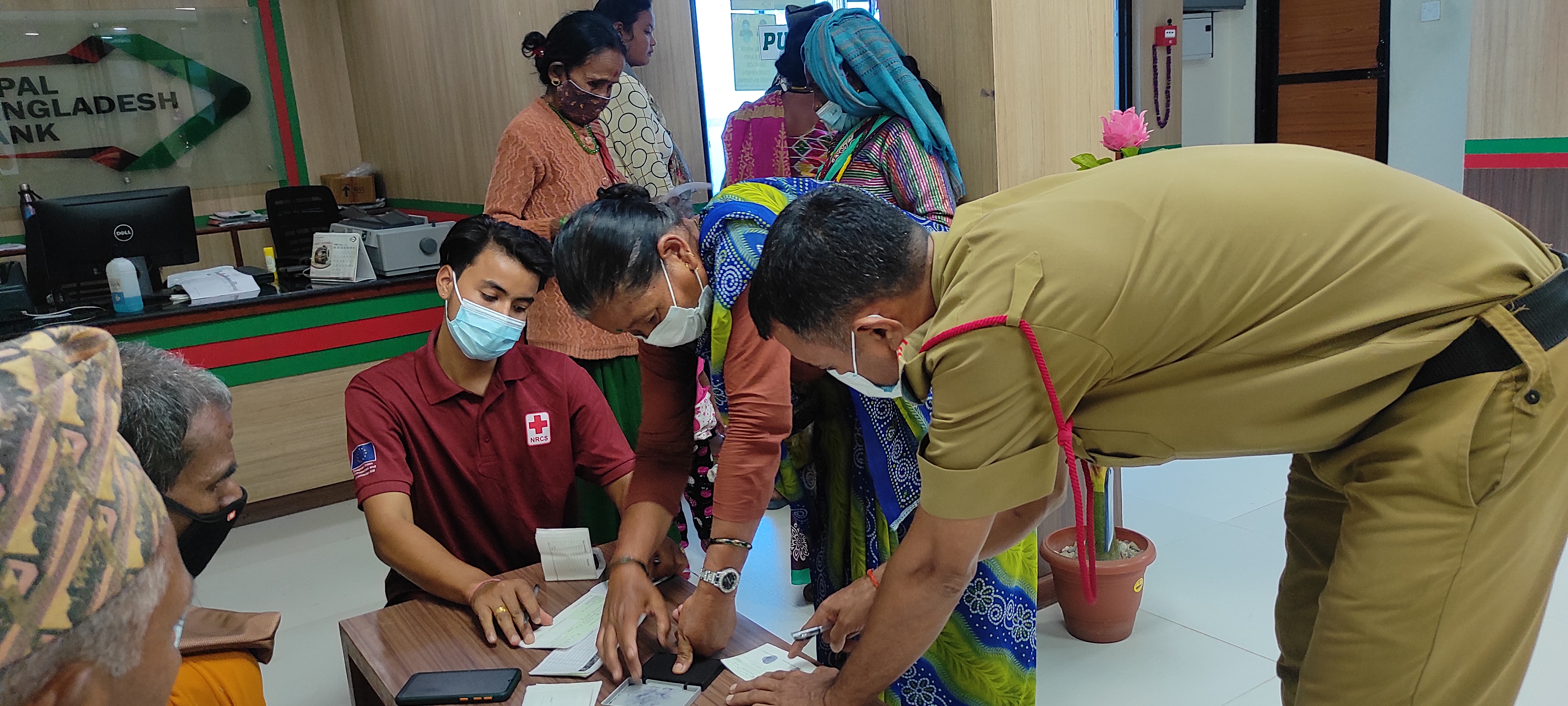Piloting Shock Responsive Social Protection in Nepal Through Cash Assistance
Every monsoon season, Nepal is hit by devastating floods and landslides which kill people and destroy livelihoods. Instead of waiting for a disaster to strike, responding in its anticipation can help to reduce the scale of devastation and the resources needed to meet humanitarian needs. Tying anticipatory work into the government’s social protection system has the potential to reach more people with timely information and support, which is more effective and requires fewer resources. Therefore, the Danish Red Cross is supporting the Nepal Red Cross Society in developing forecast-based anticipatory actions that can be partially delivered through already existing social protection mechanisms.
Multi-purpose cash assistance gives individuals and families the freedom to make autonomous decisions in prioritising and meeting their immediate needs, which vary for one family to the next. With the financial support from the European Commission´s Directorate-General for Civil Protection and Humanitarian Aid Operations (DG ECHO), the Nepal Red Cross Society has been exploring ways to utilise the Nepalese social protection system to act in anticipation of a disaster and to immediately address its impacts.
The Nepalese government’s Social Security Allowance (SSA) programme reaches up to 3.4 million vulnerable individuals under five main categories – senior citizens, persons with disabilities, children under five, single and widowed women, and endangered communities. The SSA registry includes recipient phone numbers and geographical locations, as well as the category under which allowances are received. Banking channels are used to distribute the allowance.

In September 2021, a simulation was conducted with technical support from the Danish Red Cross. It tested the provision of cash relief to people at-risk through SSA bank accounts. Early warning messages were sent to allowance recipients’ phone numbers and persons with disabilities from at-risk areas were identified for early evacuation. The simulation provided an opportunity to assess the receptivity of the local government towards the idea of making the social protection system responsive to shocks, as well as the potential of utilising the system to take early action and provide timely relief in case of a disaster.
One month later, after an already disruptive monsoon season, Nepal was hit by post-monsoon downpour resulting in the country’s worst flooding in recent history. Nepal being an agrarian country, the devastation was amplified by its timing as the flood occurred during harvesting season. Ready-to-harvest crops were damaged or swept away by the rain, provoking urgent humanitarian needs among flood-affect families.
For the first time in Nepal, multi-purpose cash assistance was provided to vulnerable groups affected by floods through leveraging Nepal’s SSA programme to meet essential needs and support early recovery of individuals fulfilling the following two targeting criteria:
1. SSA recipient households
2. Assessed as having partially or fully damaged homes as a result of the flooding

Within a month of the floods, emergency funds from the Danish Red Cross were mobilised for the Nepal Red Cross Society to provide multi-purpose, direct cash assistance to vulnerable groups´ SSA bank accounts whose houses were fully or partially destroyed. This proved that the government’s social protection system can be used to provide cash assistance at scale before or after a disaster in a cost- and time efficient way. It also opened the path for the Nepalese government and humanitarian actors to use pre-existing government mechanisms to meet humanitarian needs.
”The flood had inundated our house. We were left with nothing but the clothes on our backs. With the cash relief, I bought winter clothes for my 3 children. My youngest, 5 months’ old, caught pneumonia from the cold so I spend some of the money on his treatment”, says Pabitra Jaigadi from the affected Kailali district.
Two messages were sent to eligible recipients: one announcing that NPR 13,500 (approx. EUR 100) would be deposited into their SSA bank accounts, the second message notifying them of the deposit. Recipient Bharat Tamati shares, “I received a message on my mobile phone from the Janaki Municipality saying that the SSA recipients whose houses were damaged would receive cash relief in their SSA bank account. Later, Nepal Red Cross Society volunteers also visited and explained it to me.”
Partnering with the government proved to be an efficient way of providing emergency relief in Nepal and created opportunities for humanitarian actors and the government to provide cash top-ups through SSA bank accounts. Moving forward, the Nepal Red Cross Society will continue to test various ways of strengthening the national Social Protection system to ensure that in times of a disaster, services can reach vulnerable people swiftly through existing, familiar mechanisms. Plans for further social protection initiatives are also underway, such as cash top-ups as early action or piloting pre-paid debit cards to reach at-risk populations which are not part of a social protection programme. Lessons learned from such experiences are planned to be shared with wider networks with the aim of collective learning and collaboration.
Basic information
Activity name
Forecast-based Action and Shock Responsive Social Protection in Nepal
Country
Nepal
Duration
2020 - 2022
Partners
Danish Red Cross, Nepal Red Cross Society, Handicap International, Red Cross Red Crescent Climate Centre, European Commission Directorate-General for European Civil Protection and Humanitarian Aid Operations (DG ECHO)
URL
Anticipation Hub: Forecast-based action and shock responsive social protection in Nepal

